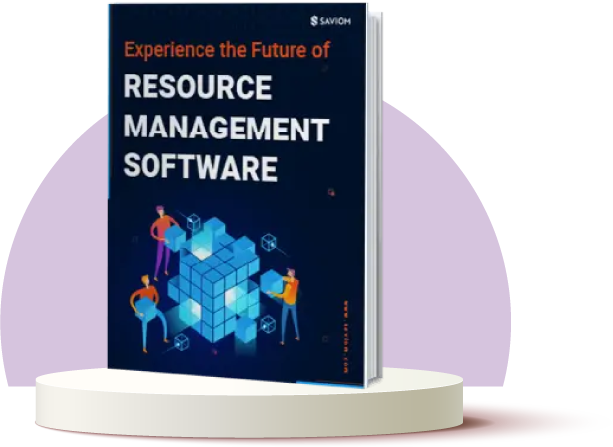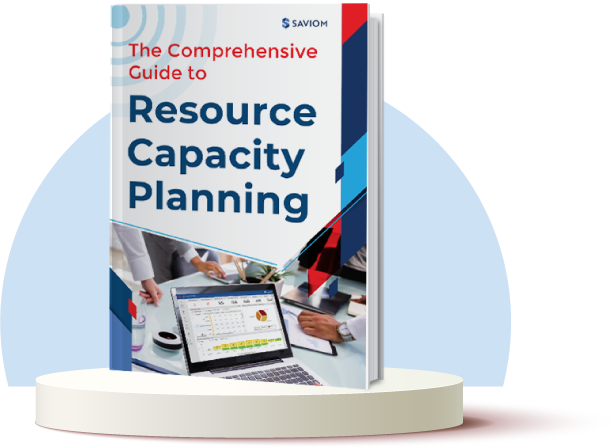Is it possible to talk about project management without talking about risk? Modern businesses understand that when it comes to managing projects and staying ahead of the competition, it’s necessary to manage resource risks. These risks include challenges such as talent shortages, skill gaps, lowered productivity, and more
“As per a Gartner report, one of the major resource risks is the increasing skills gap in the organization, as 80% of organizations face a hard time finding and hiring skilled professionals.”
While traditional risk management approaches may have worked well in the past, they typically fail to evaluate and prioritize risks properly. In addition, it becomes more challenging when managers need to handle these resource risks simultaneously for several projects.
That’s why managers must adopt new-age, robust strategies to identify, categorize, and mitigate resource risks early to protect project workflow from disruptions and ensure timely delivery.
In this blog, we will look at various types of resource risks and ways to mitigate them effectively.
But first, let’s begin with the basics!
What is Resource Risk?
Resource risk refers to the potential issues or uncertainties related to the availability, quality, or effective use of business resources that could have an adverse effect on project or business objectives. If not managed well, resource risks can negatively impact critical project elements such as timeline, quality, budget, or scope.
Now, let’s understand the significance of risk management in driving projects to success.
Why is Resource Risk Mitigation Critical in Project Management?
As projects rely on various types of resources, like human, non-human, and financial assets, to achieve their objectives and goals, organizations must manage associated risks effectively. Failing to do so will jeopardize vital project parameters, such as scope, timelines, budgets, and final deliverables.
By identifying potential resource risks early, managers can develop contingency plans to mitigate the impact of unforeseen events and reduce the likelihood of project failure. It allows them to allocate resources more efficiently across various project activities, reducing wastage and enhancing team productivity.
Besides, resource risk management enables managers to recognize existing skill gaps within the workforce and address them through appropriate training or hiring measures. This helps ensure the project has the necessary competencies for initiation and execution. Lastly, managers can establish credibility and trust among stakeholders by managing resource constraints effectively, leading to improved satisfaction and project success.
With an understanding of the significance of resource risk mitigation, let’s move on to the next steps.
Steps to Assess Project Resource Risk
Enlisted below are the necessary steps project managers need to take to create a proper risk management framework:
Risk Identification
Before project initiation, managers must assess the type, number, roles, timelines, and charge-out rates of resources needed. This insight allows firms to remain vigilant and anticipate potential resource risks such as shortages, scheduling conflicts, sudden ramp-down, unplanned absenteeism, sub-optimal utilization, critical dependencies on key individuals, etc.
Risk Assessment
Once the risks have been identified, managers must thoroughly assess each resource risk’s likelihood of occurrence, priority level, and severity. To structure and evaluate the various risks, they can use methodologies such as risk registers, SWOT analysis, brainstorming, and the Delphi technique.
Risk Response Planning
Once the assessment is done, project managers must shift focus toward risk response planning to handle each resource risk effectively when they arise. This step ensures the team knows exactly how to act if the identified risks materialize, reducing downtime and minimizing disruptions.
Monitor & Control Risk
This process involves regularly tracking, reviewing, and optimizing the risk plan. It evaluates the effectiveness of the risk response and contingency plans throughout the project lifecycle, ensuring no risk is overlooked. Simultaneously, managers must regularly monitor the budget allocated to address potential resource risks and take corrective action to ensure no cost escalations or fund deficits.
Read More: Enterprise Risk Management: 8 Core Components
Knowing the steps in assessing the resource risks in projects, let’s look at some resource risk examples.
Resource Risk Examples
Some common resource-related risks include:
Lack of Resources
Organizations usually have projects in the pipeline. However, due to the persistent use of legacy systems, managers don’t have complete visibility into these projects and their workforce requirements. Thus, it makes it difficult for them to ensure the resource availability for timely project initiations. Ultimately, this leads to last-minute firefighting for competent resources or costly hiring.
Sub-Optimal Workforce Utilization
When managers do not have visibility into resource bookings, capacity, and availability, it can lead to under/overloading. In case resources are underutilized, it will cause disengagement and low morale. Conversely, in case of over-utilization, the employees may feel stressed, burnt out, etc. Therefore, sub-optimal workforce utilization will lead to low productivity, unplanned attrition, and disruption in project workflow.
Employee Burnout and Unplanned Attrition
When resources are consistently assigned tasks exceeding their skills, knowledge, or capacity for an extended period, it can result in work-related stress. If the situation persists, it may lead to employee burnout. This impacts their ability to perform daily tasks optimally or meet deadlines. Additionally, employees might take frequent leave to avoid work, resulting in absenteeism and, ultimately, unplanned attrition.
Read More: How Workforce Planning Prevents Employee Burnout Down the Line
Skill Obsolescence
Due to rapid technological advancements and changing skill demands, resources’ current competencies can quickly become obsolete, resulting in skill gaps. This may render them unprepared to take on new or advanced projects, potentially leading to missed business opportunities. Moreover, skill obsolescence can hinder ongoing project workflows, causing client dissatisfaction and reputational damage.
Scheduling conflicts
Within a matrix organization structure, where resources work across different departments, teams, or locations, gaining real-time visibility into their calendars becomes challenging. This lack of insight can lead to scheduling conflicts, such as double bookings. If these issues aren’t addressed on time, it results in resource unavailability, under/overallocation, and project schedule/budget overruns.
Dependency on Critical Resources
Due to scarcity and high-cost rates of niche-skilled resources, organizations possess only a limited number at a given time. However, when there is a sudden surge in demand for these critical resources, project priorities may compete with one another. This dependency on critical resources can result in them working beyond their capacity, hampering their productivity and work quality.
Lowered Productivity
Employees struggle with lower productivity due to various factors, such as excessive workload, unrealistic deadlines, skill mismatches, low morale, etc. Moreover, work stagnation can contribute to lower morale and sub-par performance. When managers fail to address these issues, employees experience disengagement and burnout. In the long run, it may lead to attrition, reducing the company’s internal talent pool.
Read more: How Can You Implement Workforce Optimization to Improve Productivity?
Outsourcing Risk
Outsourcing poses more than a quarter of resource risks. The search for the right resources for a project contributes to project delay. Another risk, especially with offshore contractors, is replacing staff with new resources at the eleventh hour. This requires extra efforts in terms of training, knowledge transfer, and relationship building, which impacts the project’s timeline and cost.
Increase in Bench Size
When the major activities or tasks of the execution phase are completed, non-critical resources are frequently rolled off. This sudden ramp-down of resources leads to an increase in bench size. Moreover, there are other reasons that can lead to this, including last-minute project cancellations or a project being struck due to budgetary constraints. If this happens, the firm risks losing its talent and profit margins.
Absence of Succession Planning
“As per Gartner, it is critical to have a quality bench of leaders and a solid succession management process.”
When critical or senior resources suddenly leave the company, it can create a knowledge vacuum. Furthermore, without proper succession planning, organizations may struggle to fill the vacant roles, resulting in skill shortages. This can increase work pressure on existing employees and disrupt project workflows.
Now, let’s understand some of the best methods to mitigate resource risks effectively.
10 Effective Resource Risk Mitigation Strategies
If managers are unable to identify and mitigate resource risks, it can affect the project’s health while also impacting the firm’s financial sustainability and market reputation. Below are the best resource risk-mitigating strategies.
Foresee and Bridge Demand Gaps to Avoid Last-Minute Firefighting
Once a pipeline opportunity reaches a particular probability stage, project managers must estimate the project resource requirements to ensure they have the requisite skills within the organization. Following that, resource managers must perform a capacity vs. demand analysis to identify skill shortages or excesses. Consequently, they can implement suitable resourcing treatments to mitigate the demand gap ahead of time.
For instance, in case of resource excesses, managers can bring forward project dates or sell the extra capacity at a discounted rate. However, in case of resource shortages, managers can provide training/upskilling opportunities to the existing workforce or hire permanent/contingent resources based on project requirements. These measures can help avoid last-minute firefighting and reduce capacity wastage.
Read more: Resource Forecasting Guide For Project Managers
Use Effective Resource Estimation Technique to Prevent Idle Time
Accurate resource estimation ensures the right resources are available at the right time and cost. That’s why project managers must use well-established estimation techniques, such as bottom-up, analogous, parametric, alternative analysis, etc., to correctly assess the number, type, and quality of resources required for each task.
These techniques allow project managers to prevent under/overestimation. Moreover, they can regularly review and update the requirements throughout the project lifecycle to ensure resource demand aligns with project needs. This way, organizations can prevent idle time, avoid capacity wastages, and enhance workforce efficiency.
Apply Resource Optimization Techniques to Prevent Employee Burnout
It is imperative to track employees’ utilization levels in real-time to identify and mitigate instances of under/overutilization. Managers can implement appropriate resource optimization techniques, such as leveling and smoothing, to optimize the workforce’s schedule and ensure uniform workload distribution.
For time-boxed projects, managers can ease the pressure on overloaded resources by redistributing the workload among team members or assigning additional employees to maintain the project schedule. Meanwhile, for flexible projects, they can shift the start and end dates of tasks based on resource availability. These techniques enable managers to prevent employee burnout and enhance the resource health index.
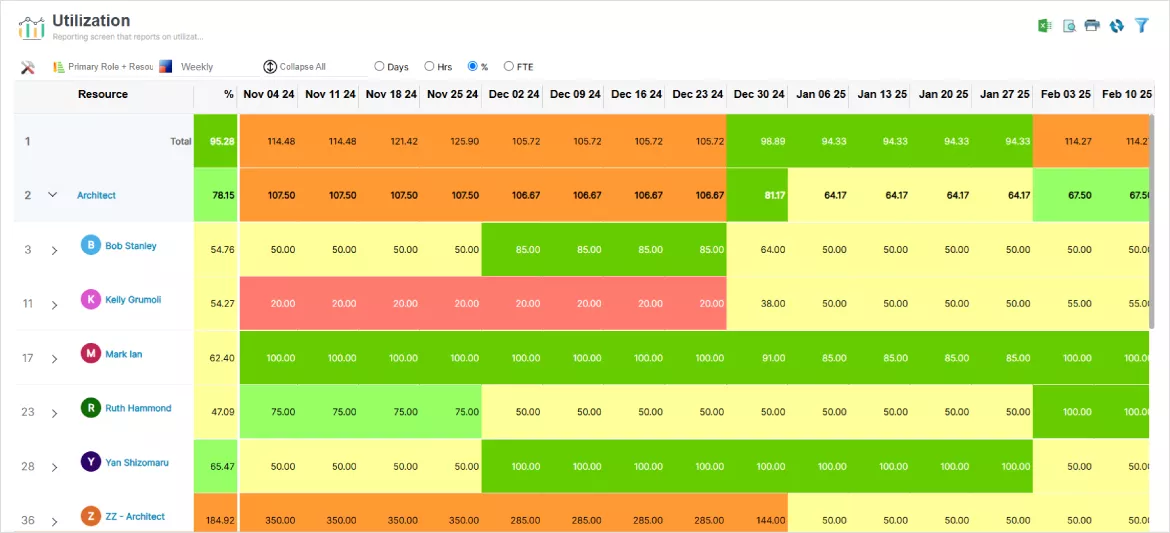
SAVIOM’s color-coded heatmaps and resource utilization reports provide in-depth insights into the utilization level of every employee.
Read More: What is Resource Optimization? A Complete Guide to Improve Project Delivery
Implement Appropriate Training and Multi-skilling Initiatives to Mitigate Skill Gaps
Organizations must have an adaptable workforce with diverse skill sets to meet emerging client and market demands. Hence, they must prioritize and develop comprehensive training and multi-skilling modules to mitigate existing skill gaps and upgrade their workforce’s competencies.
Managers can offer IDPs, on-the-job training, and shadowing opportunities to expand employees’ portfolios and equip them with multiple competencies. As a result, it will help firms to take on multi-faceted projects, future-proof their business against market volatility, and ensure financial stability.
Ensure Competent Resource Allocation for Enhanced Productivity
Competent resource allocation is key to ensuring successful project delivery. For this, organizations must deploy best-visible-best-fit resources to relevant project tasks. Therefore, managers can assess various resource attributes such as availability, skill sets, knowledge, capacity, charge-out rates, etc., to identify suitable employees.
When the right resources work on the right tasks, it ensures higher productivity, reduces errors, and delivers better-quality outcomes. Moreover, it eliminates the possibility of under- or over-skilled resources being allocated to mismatched tasks. As a result, it helps managers keep projects on track and meet client expectations.
Read More: What is Resource Allocation? A Comprehensive Guide for Project Success
Keep Backup Resources for Critical Tasks to Avoid Dependencies
Project managers must keep backup resources to ensure critical tasks don’t stall due to unplanned absences, staff unavailability, and sudden turnover. They can also identify competent resources that can be out-rotated from their current projects that are reaching the closure stage and reallocated to the new assignment, ensuring both projects stay on track.
Managers can even leverage a contingent workforce to fulfill short-term assignments or cope with demand fluctuations. Using contingent workers reduces the workload of permanent employees and allows them to focus on strategic initiatives. This way, creating a resource buffer enables team leaders to maintain project momentum amidst talent shortages.
Leverage Cost-Effective Global Resources Across the Matrix Boundaries
With proactive resource planning, firms can identify and allocate cost-effective local and global resources to projects. By replacing high-cost resources with competent professionals from low-cost locations, managers can reduce project costs significantly without compromising the quality.
Moreover, this approach will enable firms to tap into the best global talent and diversify their workforce. Beyond that, having cost-effective resources across the matrix boundaries allows organizations to offer around-the-clock client services. This enhances overall operational efficiency and improves customer satisfaction.
Read More: 5 Ways to Reduce Project Management Costs
Diversify External Vendors to Ensure the Availability of Resources on Time
Organizations can shortlist and partner with multiple empaneled vendors to ensure a steady supply of skilled resources. This strategy mitigates the risk of vendor dependency as it provides alternatives when one supplier can’t meet your requirements on time.
Moreover, negotiating with multiple vendors provides opportunities to secure better terms, pricing, and services. Firms must also regularly assess vendor performance to identify and address quality issues and ensure smooth procurement throughout the project lifecycle.
Facilitate Effective Bench Management to Improve Billability
Efficient bench management allows firms to manage the sudden ramp-down of resources across different project phases. With advanced forecasting, managers can anticipate when the resources will be released from the project so that they can look into current project vacancies and plan work for resources before they sit idle.
By allocating these resources to upcoming projects, managers can ensure continuous billability and reduce bench time. Further, if resources don’t meet the minimal qualifying criterion, managers can provide appropriate training/upskilling opportunities to improve their billable utilization for future endeavors.
Read More: 5 Effective Ways to Maximize Billable Resource Utilization in Professional Services Firms
Develop a Robust Succession Planning Strategy for Critical Positions
Succession planning is the future-focused practice that ensures that the sudden resignation of critical resources in key positions does not negatively affect the firm or ongoing projects. For this, managers can look into the internal channels to identify high-potential resources with a consistent track record.
They can prepare these candidates by providing them with the appropriate training so that they can take on strategic or senior roles. This will ensure a smooth role transition and knowledge transfer. Moreover, when internal resources are given better opportunities, it reduces employee turnover rates, boosts morale, and enhances engagement.
As the steps to mitigate the resources are clear, let’s see how advanced resource management software can help reduce risks.
How Does Modern Resource Management Software Help in Mitigating Resource Risk?
A modern resource management tool provides features that allow managers to allocate and plan resources effectively and minimize risk related to the workforce. Let’s have a look at them:
- 360-Degree Resource Visibility: It offers insights into key resource attributes such as skills, qualifications, availability, and costs, ensuring managers allocate the right personnel to the right projects.
- Forecasting & Capacity Planning: These functions help organizations forecast pipeline project demands and analyze demand gaps ahead of the curve.
- Competency Matrix: It supports succession planning by keeping a record of skills, competencies, and qualifications, which help identify high-potential candidates and prepare them for future roles.
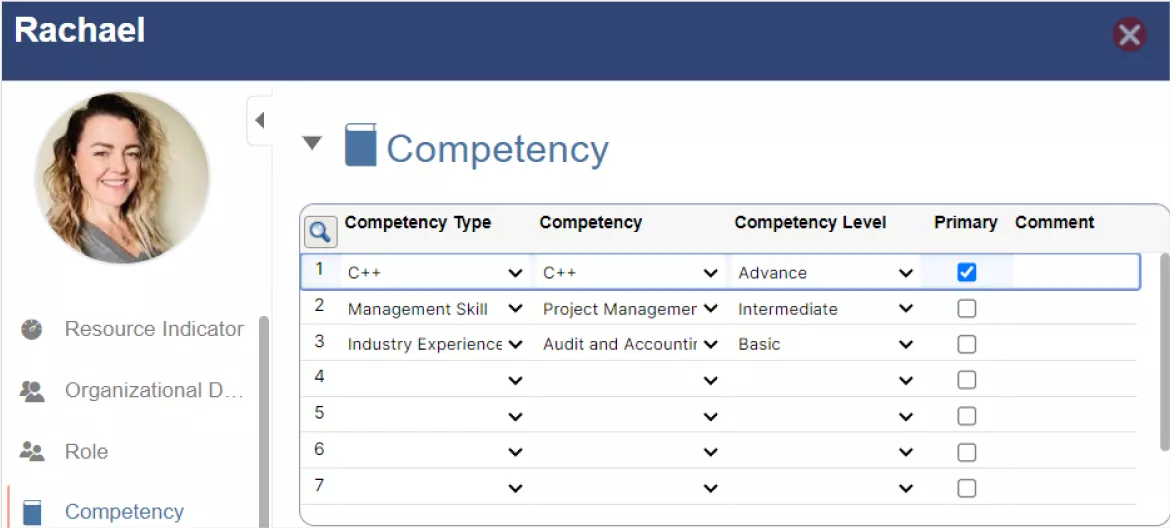
SAVIOM’s real-time competency matrix enables organizations to record, track, and update skills, qualities, and expertise of their workforce.
- Real-time Utilization Tracking: The tool provides color-coded heatmaps and forecast vs. actual utilization report, which allows team leads to address over/underloading and redirect resources to high-priority projects.
- Project Vacancy and People-on-the-Bench Reports: The reporting dashboards help managers identify available resources and assign them to project vacancies or billable/strategic tasks, maximizing productivity.
- What-If Analysis: It enables managers to compare various project scenarios and determine the best-fit resource plan. This helps managers identify and mitigate potential resource bottlenecks before they impact the project’s timeline, budget, or quality.
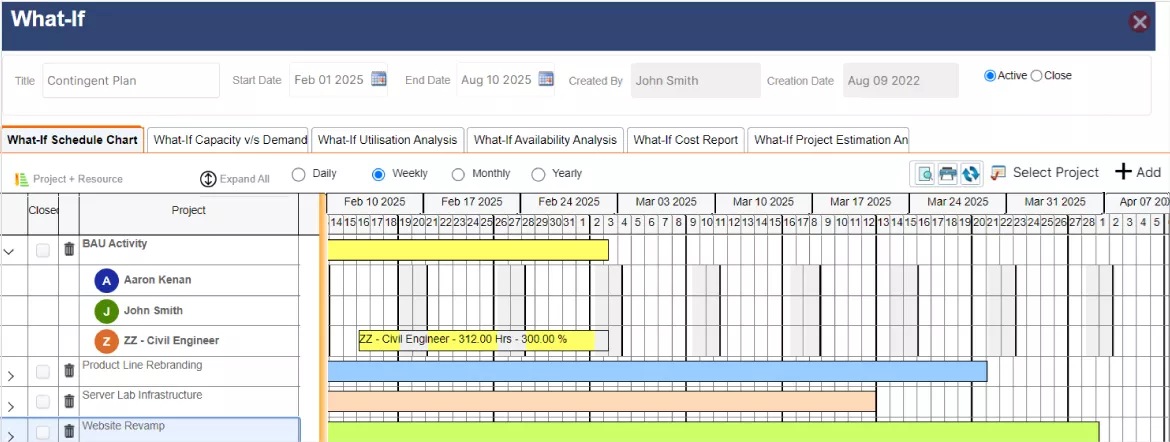
SAVIOM’s what-if analysis feature lets firms compare various resource scenarios and assess their impact on project metrics
In a nutshell, this is how an ideal resource management solution can help organizations mitigate resource risks effectively.
Read More: How Outotec Efficiently Schedules Resources with SAVIOM
Conclusion
It is evident that resource risks are inherent in projects and can continuously evolve if not mitigated well in advance. Therefore, managers can meticulously identify, analyze, and control resource risks across a project’s lifecycle using a robust resource management tool. It also provides early warnings to track the risks before they hinder the project’s progress.
What type of resource risks did you encounter recently?
The Glossary
Read More: Glossary of Resource Workforce Planning, Scheduling and Management



